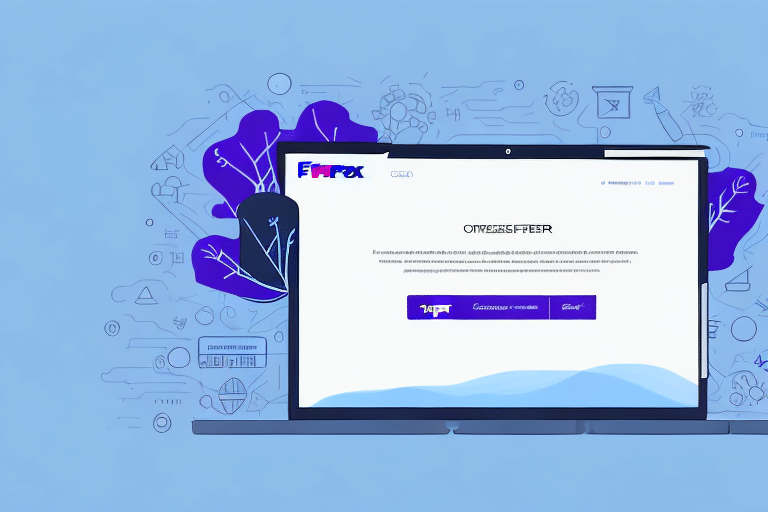Optimizing Your FedEx Ship Manager Server for Enhanced Shipping Operations
For businesses that rely on efficient shipping operations, FedEx Ship Manager Server is an essential tool. This software offers a comprehensive suite of features that streamline the shipping process, including label creation, shipment tracking, invoice management, and report generation. However, to maximize the benefits of FedEx Ship Manager Server, it's crucial to understand which version you're using and ensure it's up to date.
Importance of Knowing Your FedEx Ship Manager Server Version
Understanding the specific version of FedEx Ship Manager Server your business is utilizing is vital for several reasons:
- Access to Features: Different versions come with varying features and capabilities. Using an older version might mean missing out on useful tools that can enhance your shipping operations.
- Compatibility: Ensuring your software version is compatible with other systems and hardware within your business infrastructure is essential for seamless operations.
- Support and Updates: FedEx provides support and software updates primarily for the latest versions. Older versions may no longer receive critical updates or technical support.
Additionally, maintaining an updated version is crucial for security. Older versions might have vulnerabilities that could be exploited, putting your business and customer data at risk. Keeping your software current helps protect against potential cyber threats.
Overview of FedEx Ship Manager Server
FedEx Ship Manager Server is designed to centralize and streamline shipping operations for businesses. By managing shipping tasks through a central server, companies can achieve greater efficiency and consistency across their shipping processes.
Key Features
- Batch Processing: Handle multiple shipments simultaneously, saving time and reducing manual effort.
- Automated Shipment Creation: Automatically generate shipments based on predefined criteria, minimizing errors.
- Custom Label Design: Create and customize shipping labels to meet specific business needs.
Advanced Reporting
The software offers robust reporting capabilities, enabling businesses to generate detailed reports on shipping activities, costs, and trends. These insights allow for data-driven decision-making and process optimization.
Integration with Business Systems
FedEx Ship Manager Server seamlessly integrates with other business systems such as inventory management and order processing software, further enhancing operational efficiency.
Benefits of Updating to the Latest Version
Upgrading to the latest version of FedEx Ship Manager Server presents several advantages:
- Improved Performance and Stability: Newer versions typically include bug fixes and performance enhancements that ensure smoother operations.
- Enhanced Features: Access to the latest tools and functionalities that can streamline shipping processes and improve overall efficiency.
- Regulatory Compliance: Updates often include changes necessary to comply with the latest shipping regulations, helping businesses avoid fines and penalties.
- Enhanced Security: Newer versions incorporate advanced security features to protect sensitive shipping data from cyber threats.
Staying updated ensures that your shipping processes are not only efficient but also secure and compliant with current industry standards.
Understanding Different Versions of FedEx Ship Manager Server
Version Variations
FedEx Ship Manager Server has released multiple versions over the years, each introducing new features and improvements. As of 2023, the most recent version is Version 3540. Businesses may still be operating on older versions like Version 3200 or Version 3231, which may lack some of the advancements present in newer releases.
Feature Comparisons
Comparing different versions helps in identifying the necessity of an upgrade. For instance, Version 3540 offers enhanced support for international shipping and better integration with third-party warehouse management systems, features that older versions might not support.
Security Enhancements
Newer versions come with improved security protocols such as encryption and multi-factor authentication, providing better protection for sensitive shipping information compared to their predecessors.
Common Issues with Older Versions
Operating on an outdated version of FedEx Ship Manager Server can lead to various challenges:
- Compatibility Issues: Older versions may not be compatible with newer operating systems or hardware, causing functional disruptions.
- Performance Problems: Users might experience slower processing times, software crashes, or other performance-related issues.
- Security Vulnerabilities: Outdated software can have unpatched security flaws, making it susceptible to cyber-attacks and data breaches.
Addressing these issues typically requires upgrading to a more recent version to ensure smooth and secure shipping operations.
How to Upgrade to the Latest Version
Upgrade Process
Upgrading FedEx Ship Manager Server involves a few essential steps:
- Download the Latest Version: Visit the official FedEx Ship Manager page to download the most recent version.
- Installation: Install the downloaded software on your server, following the on-screen instructions.
- Configuration: Configure the software settings to align with your business requirements.
Best Practices
- Backup Data: Prior to upgrading, ensure all existing data and settings are backed up to prevent loss during the transition.
- Test the Upgrade: After installation, thoroughly test the software to confirm that all features function correctly.
- Update Integrated Systems: Ensure that any other business systems integrated with FedEx Ship Manager Server are also updated to maintain compatibility.
If assistance is needed during the upgrade process, contacting FedEx Customer Support can provide valuable guidance and support.
Maximizing the Latest Features of FedEx Ship Manager Server
Utilizing New Capabilities
After upgrading, take full advantage of the new features available in the latest version. Features such as enhanced reporting tools and expanded shipping options can significantly improve your shipping efficiency.
Enhancing Security and Data Backup
Implement best practices for security, including regular data backups and adherence to security protocols, to protect your business's sensitive information.
Integrating with Business Tools
Integrate FedEx Ship Manager Server with other essential business tools like ERP systems or order management software to further streamline your operations and enhance productivity.
Automating Shipping Processes
Leverage the software's automation capabilities by setting up rules and workflows that automate routine shipping tasks, reducing manual effort and minimizing errors.
Staying informed about updates and new features ensures that your shipping operations remain efficient, secure, and aligned with the latest industry standards.
Conclusion
Understanding and maintaining the latest version of FedEx Ship Manager Server is crucial for businesses that depend on efficient shipping operations. Regular updates not only provide access to new features and improved performance but also ensure security and regulatory compliance. By staying proactive in managing your FedEx Ship Manager Server version, you can optimize your shipping processes, protect your business data, and enhance overall operational efficiency.




















